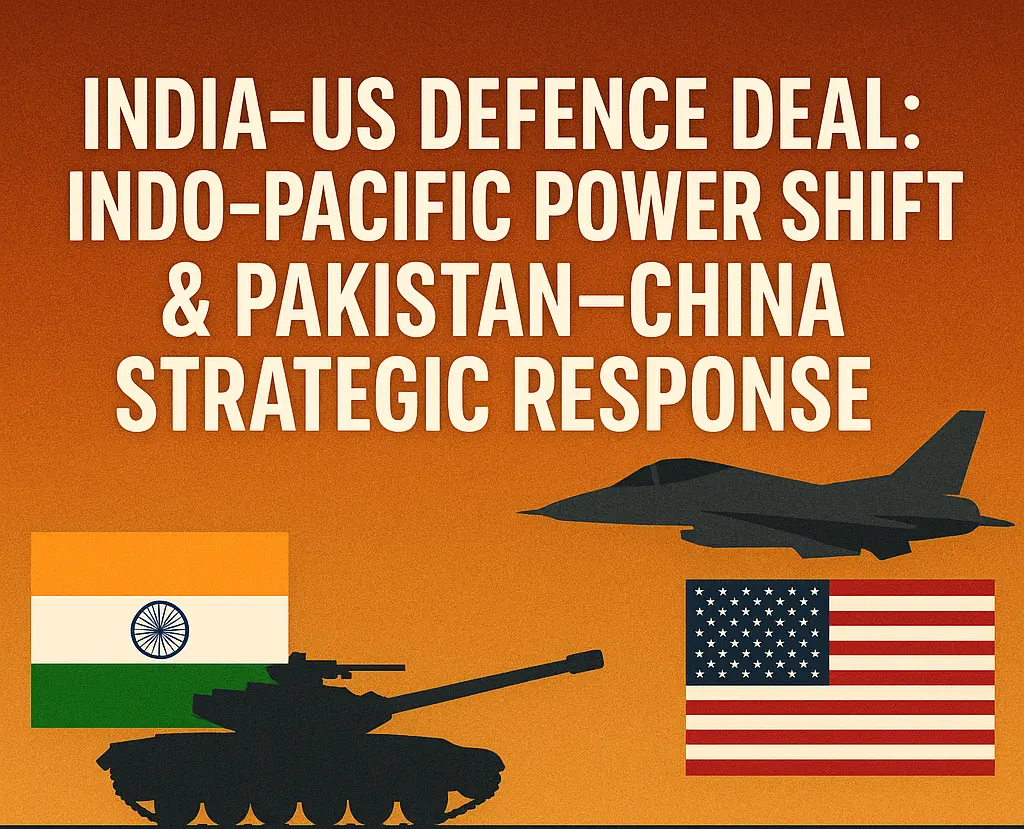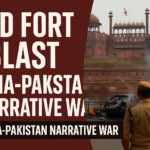Let’s be honest — when two global players sign a long-term defence deal, it’s never “just a defence agreement.”
It’s a statement.
It’s a signal.
And sometimes… it’s a warning to others watching.
That’s exactly what many analysts are saying about the India–US defence deal a 10-year military cooperation agreement reshaping Asia’s security map.
Today, I’ll explain what this deal really means, why America picked India, and how Pakistan should realistically respond — without panic, without denial, and without illusions.
Let’s talk straight and simple.
What Is the India–US Defence Deal in Simple Words?
To keep it very clear:
The United States and India agreed to work closely on defence for the next 10 years.
That means:
✅ Joint military exercises
✅ Advanced weapons development
✅ Technology sharing & tactical training
✅ Intelligence & surveillance cooperation
✅ Support for India’s defence manufacturing
✅ Closer naval partnership in the Indo-Pacific
In one line:
America wants India as a long-term partner in Asia.
And the timing matters — global power is shifting fast.
Why Did the US Choose India Now?
Think about what’s happening:
•China is rising economically and militarily
•The Indo-Pacific is becoming the new “strategic battlefield”
•The US wants partners, not rivals, in Asia
•Russia is busy in its own geopolitical theatre
So the US looks at India and sees:
•A huge military
•A giant market for defence sales
•A counter-weight to China
•A country seeking Western tech
In simple English:
The US needs India as a strategic chess piece.
But does that mean unconditional love?
No. This is strategy, not romance.
But Didn’t Trump Humiliate India Earlier?
Yes — and it matters for Pakistan’s understanding.
After Operation Sandoor, Trump:
•Publicly said 7 Indian jets were shot down
•Called out India’s military losses multiple times
•Imposed tariff penalties on Indian goods
•Took credit for “exposing India’s weakness”
One day humiliation…
Next day partnership.
That’s how great-power politics works.
So if anyone in Pakistan thinks:
“America praising Pakistan means we are winning”
or
“America praising India means we are losing”
…they don’t understand realpolitik.
Global powers don’t do “friends forever.”
They do interests forever.
What Changes for India With This Deal?
Let’s break it down short and clean:
India Gains:
•Faster defence modernization
•Better access to American technology
•Closer intel-sharing with Washington
•Stronger position in Indian Ocean
•More global legitimacy as a military power
India Expects:
•Support against China
•Pressure on Pakistan diplomatically
•Investments in defence industry
But India Risks:
•Becoming too dependent on US tech
•Losing its “strategic autonomy” image
•Being pulled into US-China rivalry
Every gift has a price.
What This Deal Does to the Indo-Pacific Game
Before this pact, Asia was already tense.
Now, you will see:
•More US naval presence in Indian Ocean
•Joint maritime patrols
•Closer radar & surveillance network
•New military bases access agreements
•Quad ties strengthening (US-India-Japan-Australia)
Quietly, the Indo-Pacific is turning into a military chessboard.
Pakistan cannot ignore this.
Real Talk: What Does This Mean for Pakistan?
Let’s be mature, calm, and strategic.
It’s not time to panic.
It is time to plan.
Challenges Pakistan must note:
•India will modernize faster
•US–India intelligence will improve
•Maritime pressure in Arabian Sea will rise
•Regional diplomacy will shift
So Pakistan needs to:
✅ Strengthen strategic ties with China
✅ Expand defence partnership with Türkiye & Gulf
✅ Upgrade naval and ISR capability
✅ Focus on drones, missiles, EW, cyber tech
✅ Stabilize economy (no defence without economy)
The truth is: security follows economy.
A strong rupee builds a strong military.
A strong economy builds powerful alliances.
China–Pakistan Axis: The Real Anchoring Strategy
Let’s say it clearly:
US gives India attention.
China gives Pakistan partnership.
There’s a difference.
China–Pakistan partnership provides:
•J-10C, JF-17, missile tech, drones
•Naval platforms and ISR support
•CPEC for economic depth
•Regional intelligence coordination
•Long-term strategic trust
In defence reality, trust and tech matter more than tweets and headlines.
And as US–India ties deepen, China will double down on Pakistan — because Pakistan is China’s western security flank and gateway to warm waters.
This is not emotion. It’s strategy.
What Pakistan Should Do Now (Action Blueprint)
Here’s a clear, real-world response framework:
✅ Military
•Accelerate drone & missile programs
•Expand naval surveillance & subs
•Strengthen joint training with China-Türkiye
✅ Diplomatic
•Balance relations with US — stay civil, not hostile
•Deepen ties with Gulf — economic + defence
•Use SCO and regional diplomacy smartly
✅ Economic
•Fix energy & export structure
•Prioritize defence-economic projects (like Turkey model)
•Build tech & cyber industries
✅ Information Space
•Avoid emotional noise
•Communicate strategy, not fear
•Educate public on modern warfare
Pakistan’s power will come from strategy + discipline + long-term vision.
Not slogans. Not panic.
Quick FAQ
Is this pact against Pakistan?
No, it’s mainly about China — but Pakistan is part of the regional equation.
Will the US abandon Pakistan?
Pakistan isn’t abandoned — but we must build leverage, not wishful thinking.
Should Pakistan panic?
No. Pakistan must plan, modernize, and strengthen alliances.
Is China still Pakistan’s main ally?
Yes — and this deal makes that partnership even more important.
Can Pakistan still work with the US?
Yes, but strategically — not emotionally.
Final Takeaway
In geopolitics, nations don’t rise by complaining…
They rise by preparing.
The India–US defence deal is a big move — but not the end of the game.
Pakistan’s strength lies in:
•Strategic patience
•Smart alliances
•Economic discipline
•Defence modernization
•China–Pakistan cooperation
•Calm, calculated thinking
Great nations don’t chase headlines — they build futures.
And Pakistan’s future if handled wisely can remain powerful and secure.
This article will be updated as new insights emerge.
SEO Title
Meta Description










